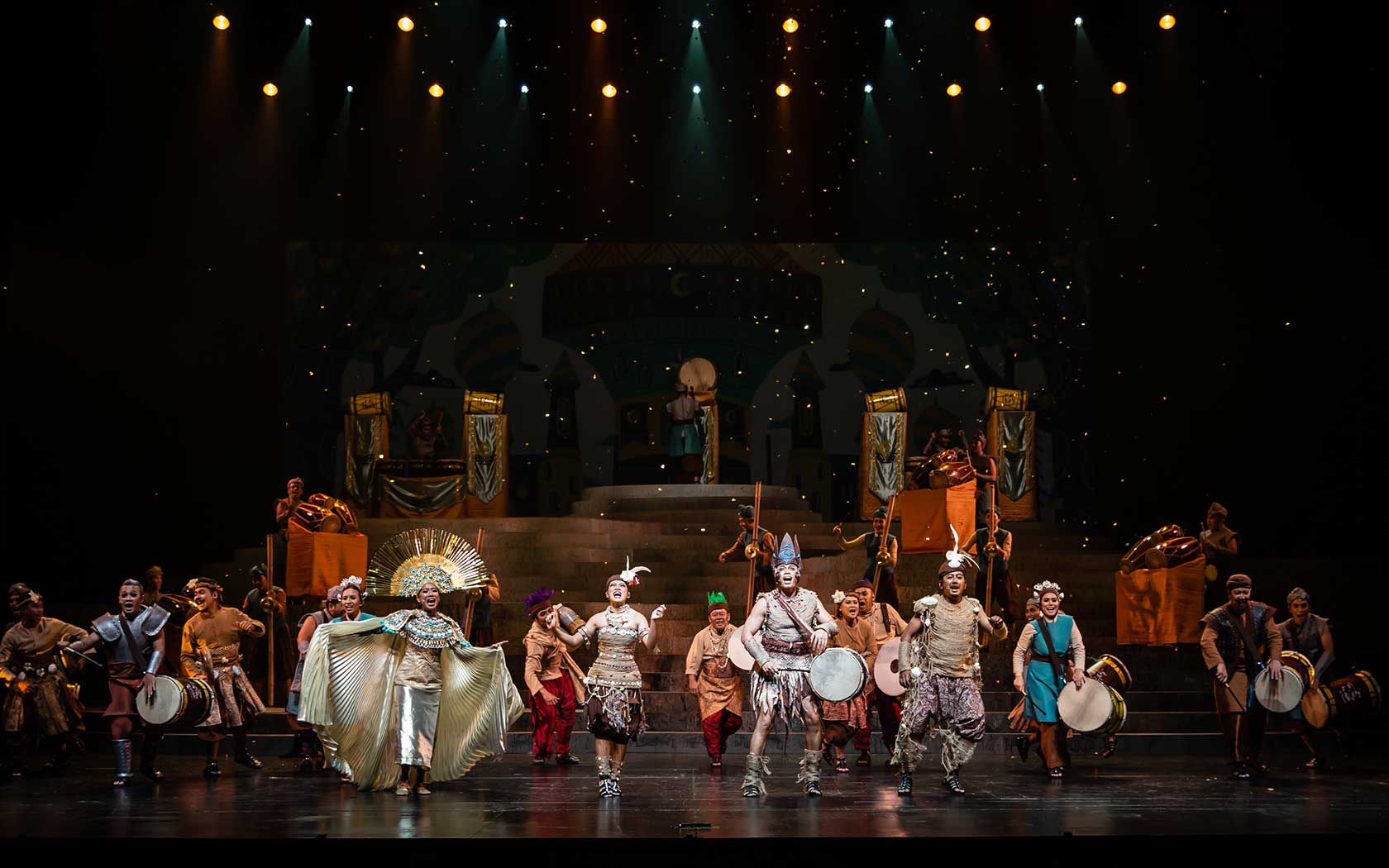We use cookies to improve your experience on our site. To find out more, read our data protection and cookie policy. By using our site, you agree to our use of cookies. Close to continue browsing.
Esplanade Presents
Throat Singers of Tuva
13 Apr 2024, Sat, 8.45pm
14 Apr 2024, Sun, 9.30pm
14 Apr: 1hr (Intermission: None)
Esplanade Concert Hall (13 Apr) & DBS Foundation Outdoor Theatre at Esplanade (14 Apr)
This event is over.

This event is over.
Take in the sounds of the land, nomadic life and nature with Tuvan ensemble Huun-Huur-Tu, arguably the most well-known throat-singers in the world today.
Known as khorekteer or khoomei or xöömei, Tuvan throat singing comprises a family of multi-voiced, overtone-rich vocal techniques common to Tibetan, Altaian and Mongolian cultures, but rarely heard in the rest of the world, and certainly fits nowhere in Western music theory.
For centuries, the call of the Tuvan throat singer has resounded in the steppes of Tuva. Sometimes it consists of high, fluty whistles like birdsong. Sometimes it is a heavy, croaking chest drone that seems to come from deep within the bowels of the earth. At other times, it trills like a bubbling brook or thrums like galloping horses.
A place like no other, Tuva is a sparsely populated region between Siberia and Mongolia that remained a mystery through the Soviet era. It is a land of boundless steppes, fir forests, jagged mountains, glacial lakes and vast meadows, sharp with bitter cold, and alive with the whistle of wind, the rush of waters and the call of birdsong.
It is here that Tuvan throat singing is practised by herdsmen, hunters, shamans and everyday people (traditionally men) in the mountains, on the plains, in their yurts – to communicate with the spirits of nature, to establish harmony between man and earth, to tell their stories of wild horses, legendary hunts and nomadic life, to express loss or love, or simply to pass the time.
With Russia’s late 20th century capitalism however, more and more Tuvan throat singers have been invited to perform at international music festivals and on world stages. But the thing is, Tuvan throat singing was never really a public art.
It is traditionally sung by one person who occasionally may accompany himself on a bowed or plucked string instrument. And it is sung for purposes other than performance and entertainment, such as praise and shamanistic appeals for protection and harmony.
Today, while throat singing is still practiced as part of the traditional Tuvan way of life, the younger generation has begun to depart from tradition. Since the 1990s, ensembles have incorporated non-traditional instrumentation and arrangements into the traditional. There have been numerous cross-cultural and cross-genre explorations and collaborations, such as with Western chamber orchestras and jazz, blues and rock artists. Purists have decried this trend, but others feel that this is how Tuvan throat singing lives on and stays relevant.
Huun-Huur-Tu
Huun-Huur-Tu come from Tuva, a Russian federative republic, a sparsely settled region of grasslands, boreal forests, and mountain ridges that lies just north of Mongolia. The indigenous folk music of the group formed in 1992 highlights rare and native Tuvan instruments and preserves what is arguably some of the world’s oldest forms of music-making. The best-known genre of Tuvan music, xöömei (throat-singing), comprises what one might call a lexicon of musical onomatopoeia, in which natural sounds are mimetically transformed into musical representations.
Recognised as one of the foremost proponents of Tuvan throat-singing, Huun-Huur-Tu has released several albums and toured extensively to international festivals and prestigious venues, introducing Tuvan throat singing to audiences around the world. Their collaborations include artists from Ry Cooder to The Kronos Quartet. In 2009, Huun-Huur-Tu collaborated with electronic musician and record producer Carmen Rizzo (Niyaz, Ryuichi Sakamoto, Paul Oakenfold, Seal) for the album Eternal, a unique blend of ambient electronic and sonic textures compared to the style of Brian Eno. Their music has also been featured in films, video games and television series.
13 Apr 2024, Sat
8.45pm
14 Apr 2024, Sun
9.30pm


Become a member

Great arts experiences begin with Esplanade&Me. Join this membership to enjoy ticket specials on shows at Esplanade, early bird specials, promotions at Esplanade Mall, unlimited access to Offstage and more.

Never miss a show again. Get on our mailing list.
- Throat Singers of Tuva










